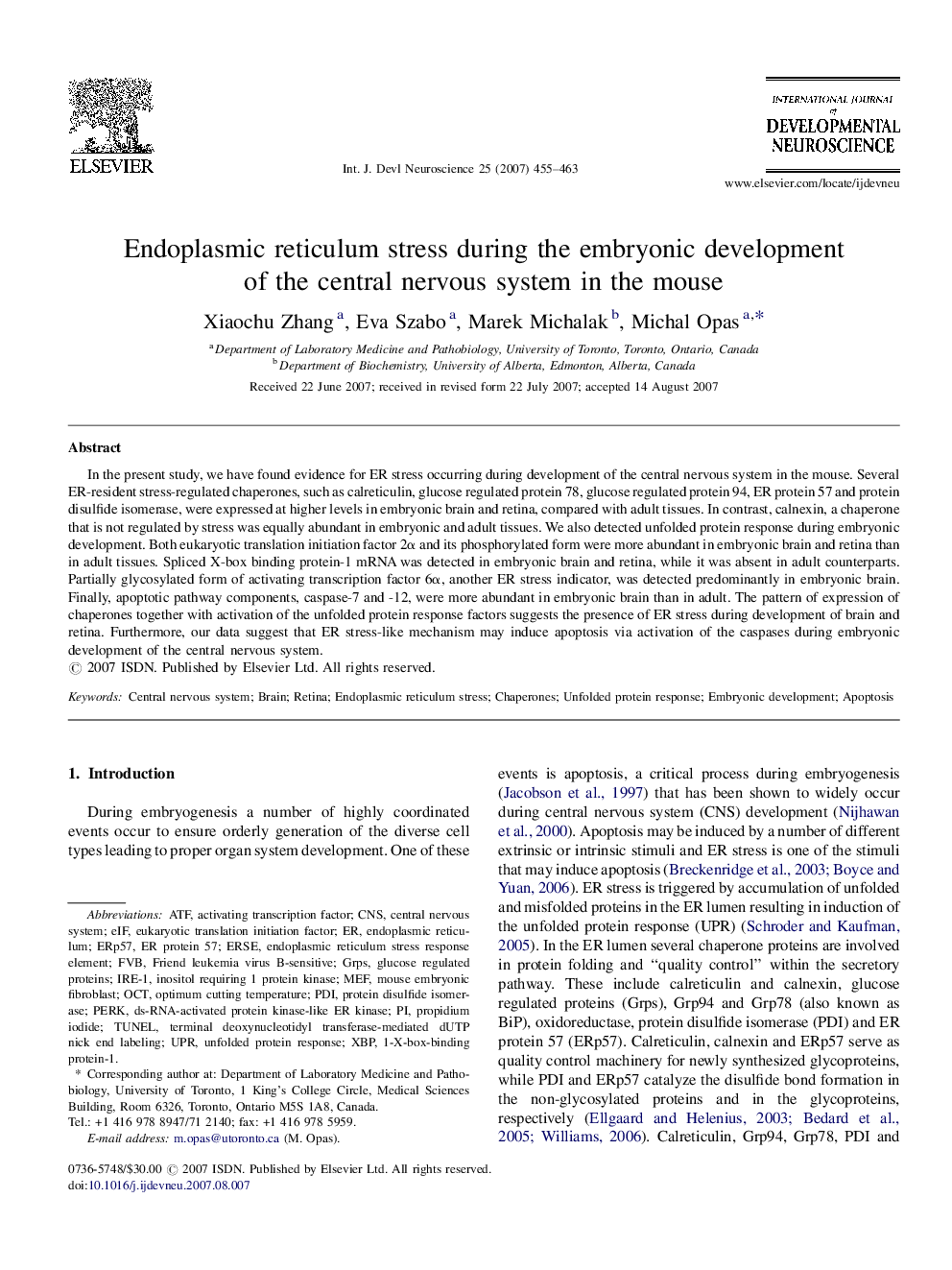| Article ID | Journal | Published Year | Pages | File Type |
|---|---|---|---|---|
| 2787148 | International Journal of Developmental Neuroscience | 2007 | 9 Pages |
In the present study, we have found evidence for ER stress occurring during development of the central nervous system in the mouse. Several ER-resident stress-regulated chaperones, such as calreticulin, glucose regulated protein 78, glucose regulated protein 94, ER protein 57 and protein disulfide isomerase, were expressed at higher levels in embryonic brain and retina, compared with adult tissues. In contrast, calnexin, a chaperone that is not regulated by stress was equally abundant in embryonic and adult tissues. We also detected unfolded protein response during embryonic development. Both eukaryotic translation initiation factor 2α and its phosphorylated form were more abundant in embryonic brain and retina than in adult tissues. Spliced X-box binding protein-1 mRNA was detected in embryonic brain and retina, while it was absent in adult counterparts. Partially glycosylated form of activating transcription factor 6α, another ER stress indicator, was detected predominantly in embryonic brain. Finally, apoptotic pathway components, caspase-7 and -12, were more abundant in embryonic brain than in adult. The pattern of expression of chaperones together with activation of the unfolded protein response factors suggests the presence of ER stress during development of brain and retina. Furthermore, our data suggest that ER stress-like mechanism may induce apoptosis via activation of the caspases during embryonic development of the central nervous system.
